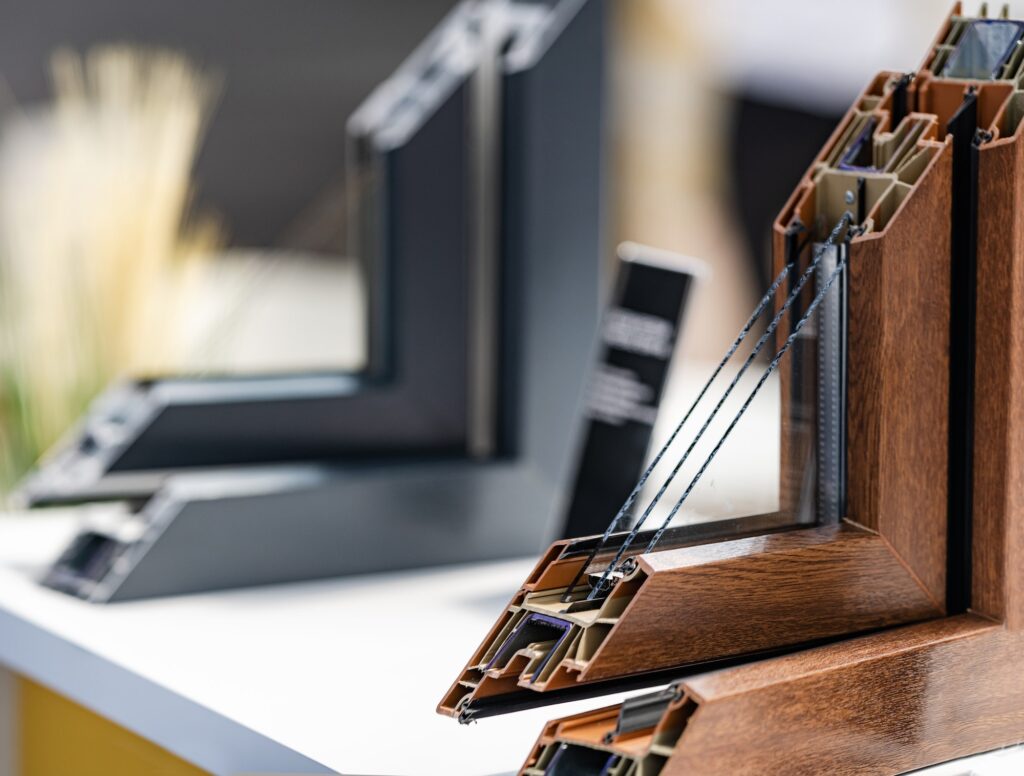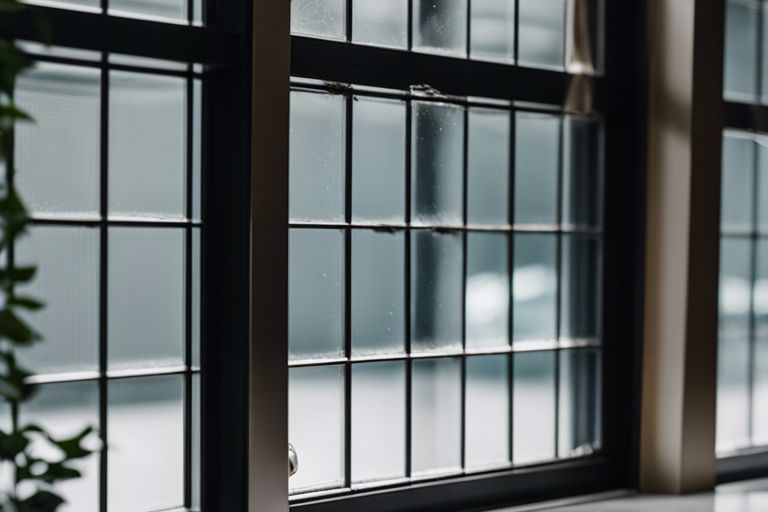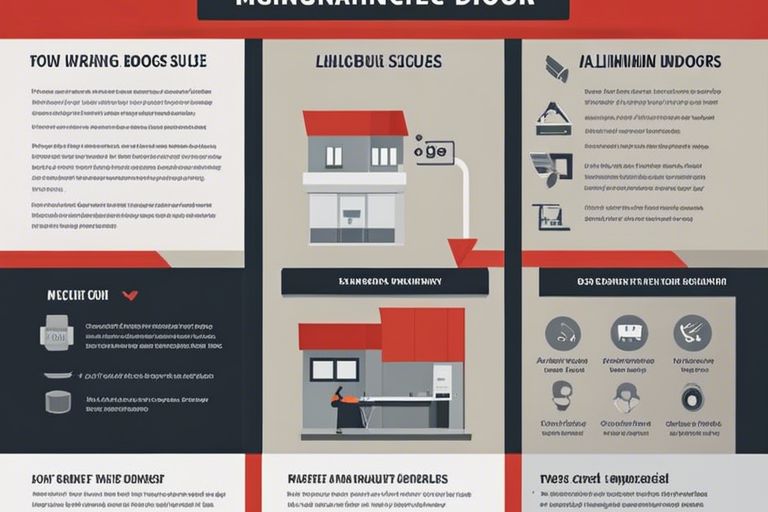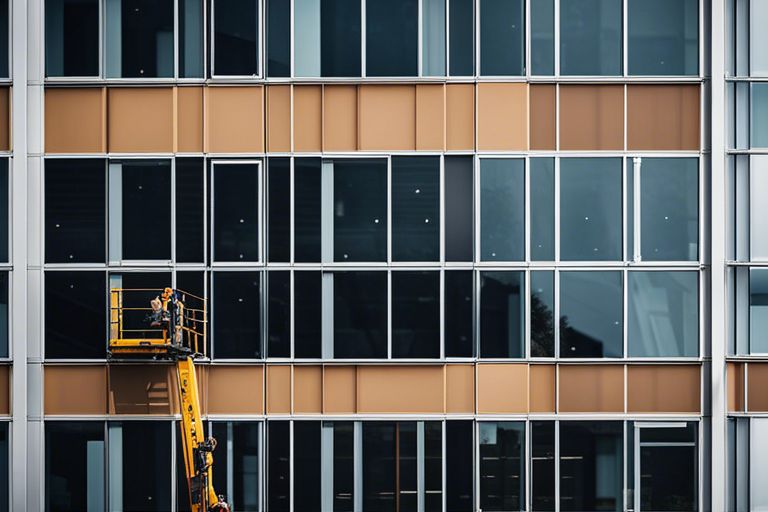Indubitably, when it comes to modern architectural designs, the use of aluminum windows and doors can add a touch of sleekness and elegance to your space. Not only do they boast a contemporary and minimalistic appeal, but they also offer durability and versatility that can complement a wide range of architectural styles. Whether you are aiming for a modern-industrial look, a minimalist aesthetic, or a sleek and stylish finish, aluminum windows and doors can be the perfect choice for your project.
Key Takeaways:
- Lightweight: Aluminum windows and doors are lightweight, making them easy to install and move. They are well-suited for modern architectural designs that emphasize sleekness and simplicity.
- Durable: These products are highly resistant to corrosion and weather damage, making them a long-lasting option for modern buildings.
- Customizable: Aluminum windows and doors can be customized to fit a variety of architectural styles, from the ultra-modern to the more traditional, making them extremely versatile.
- Energy-efficient: With the option for thermal breaks and other energy-saving features, aluminum windows and doors can contribute to a building’s overall energy efficiency and sustainability.
- Low maintenance: These products require minimal maintenance, as they do not rust or warp over time, which is especially important for modern architectural designs that prioritize low-maintenance materials.
- Large spans and slim profiles: Aluminum windows and doors can achieve large spans and slim profiles, creating uninterrupted views and a modern aesthetic that is highly sought after in contemporary architectural designs.
- Eco-friendly: Aluminum is fully recyclable, making it an environmentally friendly choice for modern buildings that prioritize sustainability.
Types of Aluminum Windows and Doors
Some of the most common types of aluminum windows and doors used in modern architectural designs include:
- Sliding and Gliding Variants
- Casement and Awning Styles
- Fixed, Picture, and Custom Shapes
- Bifold and Multifold Systems
Assume that these options provide a range of design flexibility and functionality for your architectural project.
Sliding and Gliding Variants
When it comes to sliding and gliding variants of aluminum windows and doors, you can expect smooth operation and a sleek, modern look. These types of windows and doors are perfect for maximizing natural light and creating a seamless connection between indoor and outdoor spaces. They are also suitable for large openings, allowing you to customize the size and configuration to suit your specific architectural needs.
Casement and Awning Styles
For a traditional yet versatile option, consider casement and awning styles of aluminum windows and doors. These types are ideal for providing excellent ventilation and can be easily opened and closed to control airflow in your space. Additionally, they offer a classic aesthetic that can complement a wide range of architectural designs.
Fixed, Picture, and Custom Shapes
If you’re looking for aluminum windows and doors to create a unique focal point in your architectural design, consider fixed, picture, and custom shapes. These options allow you to customize the shape and size of your windows and doors to fit your specific design vision. Whether you’re aiming for a minimalist or intricate look, these customizable options can help you achieve the desired aesthetic.
Bifold and Multifold Systems
When it comes to maximizing space and creating a seamless transition between indoor and outdoor areas, bifold and multifold systems of aluminum windows and doors are the perfect choice. These innovative systems offer a wide opening space and can be configured to stack neatly to one side, providing a clear and unobstructed view. They are also a great option for creating a modern and functional indoor-outdoor living experience.
Factors to Consider When Choosing Aluminum Windows and Doors
Unlike other materials, aluminum windows and doors offer a wide range of benefits that make them a popular choice for modern architectural designs. When considering aluminum for your windows and doors, there are several factors you should take into account to ensure that you make the right choice for your project. Here are some key factors to consider:
- Thermal Performance and Energy Efficiency
- Durability and Maintenance Requirements
- Aesthetic Compatibility with Architectural Design
- Cost Implications and Value for Money
Perceiving these factors will help you make an informed decision before choosing aluminum windows and doors for your architectural project.
Thermal Performance and Energy Efficiency
When considering aluminum windows and doors, one of the most important factors to take into account is their thermal performance and energy efficiency. Aluminum frames can be engineered with thermal breaks to improve insulation, reducing heat transfer and minimizing energy loss in your building. This can lead to lower energy bills and a more comfortable indoor environment for you and your occupants.
Durability and Maintenance Requirements
Another crucial consideration when choosing aluminum windows and doors is their durability and maintenance requirements. Aluminum is known for its strength and resistance to corrosion, making it a low-maintenance option for your building. The material’s durability also ensures that your windows and doors will stand the test of time, providing long-term value for your investment.
Aesthetic Compatibility with Architectural Design
When selecting aluminum windows and doors for your architectural project, it’s essential to consider their aesthetic compatibility with the design. Aluminum offers a sleek, modern look that can complement a variety of architectural styles. You can choose from a wide range of finishes and colors to achieve the desired aesthetic for your building, enhancing its overall visual appeal.
Cost Implications and Value for Money
Lastly, you should carefully evaluate the cost implications and value for money when opting for aluminum windows and doors. While initial costs may be higher than some other materials, the long-term benefits, including energy savings, durability, and minimal maintenance, make aluminum a cost-effective choice in the grand scheme of things. You’ll benefit from the value and performance of aluminum products for years to come.
Step-by-Step Guide for Selecting Aluminum Windows and Doors
Despite the wide array of options available, selecting the right aluminum windows and doors for your modern architectural design can be a daunting task. To help you navigate through the process, here is a step-by-step guide that breaks down the selection process into manageable steps:
Assessing Your Architectural Needs
When selecting aluminum windows and doors for your modern architectural design, it’s crucial to assess your specific needs. Consider factors such as the architectural style, energy efficiency, and security requirements of your project. Additionally, take into account the local climate and environmental factors that may impact the performance of your windows and doors.
Tips for Working with Contractors and Manufacturers
Collaborating with contractors and manufacturers is a critical part of selecting aluminum windows and doors. When engaging with professionals, be sure to clearly communicate your design and performance requirements. Request quotes and proposals from multiple suppliers to compare pricing and product offerings. Additionally, it’s important to work with reputable contractors and manufacturers with a track record of delivering high-quality products and services.
- Communicate clearly with contractors and manufacturers about your requirements
- Request quotes and proposals from multiple suppliers for comparison
- Choose reputable contractors and manufacturers with a proven track record
- Recognizing the importance of establishing clear communication and choosing the right partners can simplify the selection process and ensure the success of your project.
Installation Best Practices
Once you have selected the right aluminum windows and doors for your modern architectural design, it’s essential to focus on installation best practices. Ensure that the installation is carried out by experienced professionals who follow industry standards and guidelines. Proper installation is crucial for the performance and longevity of your windows and doors, so be diligent in overseeing this phase of the process.
Post-Installation Care and Maintenance
After the installation of your aluminum windows and doors, it’s important to establish a routine care and maintenance plan. Regular cleaning and inspection of the windows and doors can help identify any issues early on and prevent potential problems. Additionally, follow the manufacturer’s recommendations for upkeep to maximize the lifespan and performance of your windows and doors.
Overall, the selection and installation of aluminum windows and doors for modern architectural designs require careful consideration and attention to detail. By following this step-by-step guide and implementing best practices, you can ensure that your project achieves the desired aesthetic and functional results.
Pros and Cons of Aluminum Windows and Doors
Keep in mind the following pros and cons when considering aluminum windows and doors for your architectural design project.
| Pros | Cons |
| Durability | Conductivity |
| Low maintenance | Expense |
| Design flexibility | Corrosion |
| Energy efficiency | Impact on environment |
| Security | Maintenance challenges |
Advantages of Aluminum in Architectural Design
Aluminum offers numerous advantages in architectural design. Its durability and ability to withstand extreme weather conditions make it a reliable option for windows and doors. The material’s low maintenance requirements mean that once installed, you can enjoy its benefits without worry for years to come. Additionally, aluminum’s design flexibility allows for a sleek, modern aesthetic that can complement a variety of architectural styles. Its energy efficiency properties also contribute to a more sustainable building design, reducing your environmental impact while saving on energy costs.
Potential Drawbacks and How to Mitigate Them
While aluminum windows and doors offer many advantages, it’s important to consider potential drawbacks and how to mitigate them. Aluminum’s conductivity can lead to temperature transfer, impacting your building’s energy efficiency. However, with the use of thermal break technology, you can significantly reduce this effect. The initial expense of aluminum windows and doors may be higher than some other materials, but the long-term benefits and low maintenance costs often outweigh the upfront investment. Additionally, proper installation and regular maintenance can address concerns about corrosion and ensure the longevity of your aluminum windows and doors.
The Versatility of Aluminum Windows and Doors for Modern Architectural Designs
Taking this into account, you can clearly see the numerous benefits of using aluminum windows and doors in modern architectural designs. Their versatility in terms of design, durability, and energy efficiency make them an ideal choice for any contemporary building project. Whether you are looking to achieve a sleek, minimalistic look or incorporate unique and creative designs, aluminum windows and doors offer the flexibility needed to bring your vision to life. Not only do they provide a modern aesthetic, but their low maintenance and longevity make them a practical and cost-effective solution for any architectural design. So, if you are in the process of planning a modern building project, aluminum windows and doors are definitely worth considering for their versatility and functionality.
FAQ
Q: What are the benefits of using aluminum windows and doors in modern architectural designs?
A: Aluminum windows and doors are highly versatile, offering a sleek and modern aesthetic that complements contemporary architectural styles. They are also durable, low-maintenance, and energy-efficient, making them an ideal choice for modern buildings.
Q: How do aluminum windows and doors contribute to energy efficiency in modern architecture?
A: Aluminum is a highly conductive material, allowing for the use of thermal breaks and advanced insulation technology to minimize heat transfer. This helps to reduce energy consumption and improve the overall energy efficiency of a building.
Q: Can aluminum windows and doors be customized to fit specific design requirements?
A: Yes, aluminum windows and doors are highly customizable, allowing for a wide range of sizes, shapes, and configurations to meet the specific design needs of modern architecture. They can also be finished with various colors and surface treatments to achieve the desired look.
Q: Are aluminum windows and doors suitable for large-scale commercial projects?
A: Absolutely. Aluminum’s strength and durability make it an excellent choice for large-scale commercial projects, providing the structural integrity required for expansive glass facades and large openings while maintaining a sleek and modern appearance.
Q: How do aluminum windows and doors contribute to sustainable building practices?
A: Aluminum is a highly recyclable material, making it a sustainable choice for modern architectural designs. Additionally, the energy efficiency of aluminum windows and doors can contribute to green building certifications and sustainable design practices.
Q: What maintenance is required for aluminum windows and doors in modern architectural designs?
A: Aluminum windows and doors are low-maintenance, requiring only occasional cleaning and routine inspections for optimal performance. The durable finish of aluminum also helps to resist corrosion and weathering, reducing the need for frequent upkeep.
Q: Are there any limitations to using aluminum windows and doors in modern architectural designs?
A: While aluminum is a versatile and durable material, it may not be the best choice for extremely cold climates due to its high thermal conductivity. In such cases, additional insulation and thermal breaks may be necessary to mitigate heat loss.






